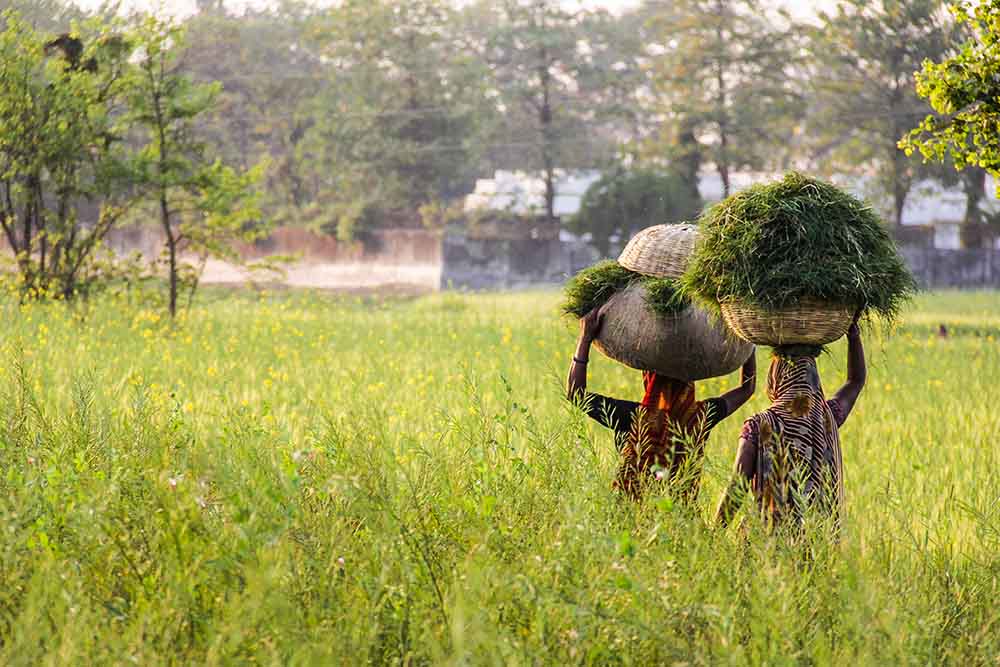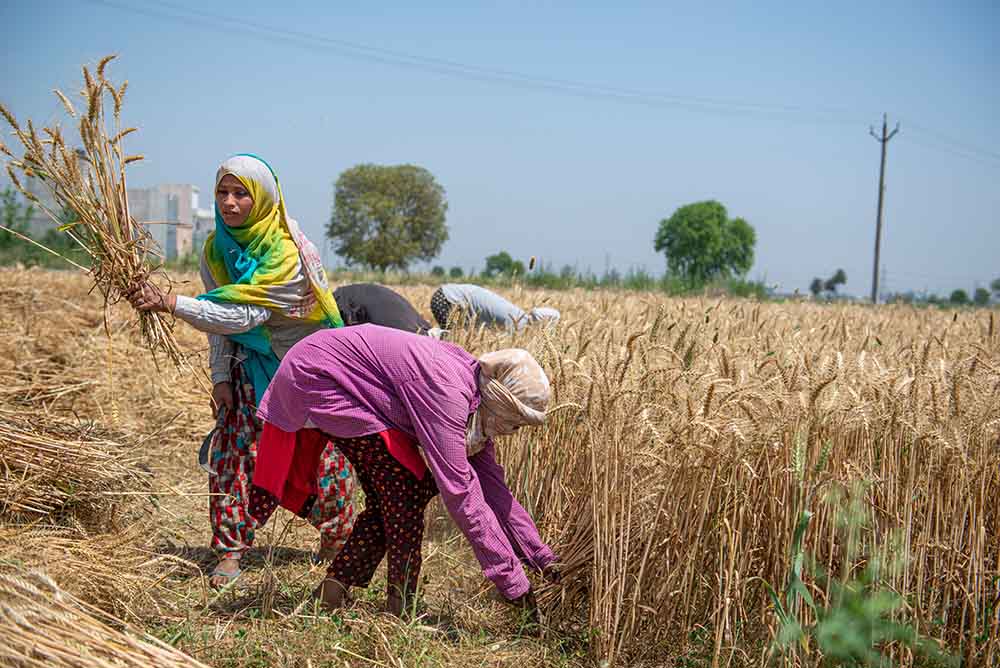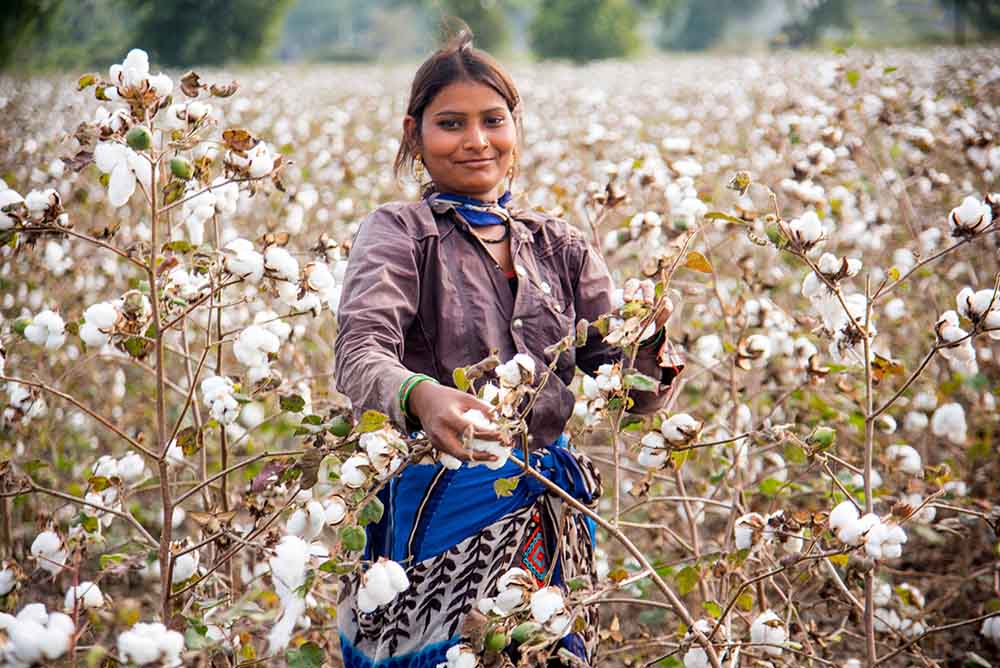Agriculture has the potential to be a key driver of growth and the eradication of poverty. But the sector is underperforming in many nations in part because of barriers that prevent women, who are frequently a vital resource in agriculture and the rural economy, from working as productively as they could.
In India, agriculture establishes ingrained customs, interpersonal relationships, and gender roles. A significant demographic group is made up of women who work in agriculture, whether through conventional or industrial methods, as subsistence farmers or agricultural labourers. This has led to externalities like poverty and marginalisation, and it has exacerbated issues of gender inequality. Agriculture is intimately related to issues like economic independence, decision-making capacities, agency, and access to education and health care.
Women in agriculture
Women play a pivotal role in agriculture in India. Their contributions are often underestimated, but they are essential to the country's food security and rural economy. The role of women in agriculture in India is of paramount importance, as women make up a significant portion of the agricultural workforce. Their contributions to the sector are multifaceted and play a critical role in ensuring food security, economic sustainability, and rural development. Here's an overview of the importance of women in agriculture in India:
1. Substantial Workforce: Women constitute a substantial part of the agricultural workforce in India. They are involved in various agricultural activities, including sowing, weeding, harvesting, and post-harvest processing.
2. Food Production: Women are responsible for a substantial portion of food production in India, contributing significantly to the nation's food security. Their role in crop cultivation and animal husbandry ensures a steady food supply.
3. Biodiversity and Seed Preservation: Women are often the custodians of traditional knowledge related to seeds and crop varieties. They play a crucial role in preserving biodiversity by maintaining native seeds and planting diverse crops.
4. Sustainable Farming Practices: Women are more likely to engage in sustainable and eco-friendly farming practices, emphasizing organic farming, water conservation, and agroforestry. Their knowledge contributes to environmental conservation.
5. Household Food Security: Women's agricultural work directly impacts household food security. They are responsible for providing nutritious meals for their families, and their role in agriculture ensures a diverse diet.
6. Empowerment and Income Generation: Women's participation in agriculture contributes to economic empowerment. It provides them with opportunities to earn income, which can be vital for their families' financial stability.
7. Rural Development: Women's involvement in agriculture is crucial for rural development. It helps strengthen rural economies, reduce poverty, and enhance the overall well-being of rural communities.
8. Women's Health and Nutrition: Engaging in agriculture allows women to have greater control over their nutrition. It ensures they have access to fresh and diverse food options, improving their overall health.
9. Skill Development: Women in agriculture gain practical skills, which can be a valuable asset for their personal and professional development.
10. Community Building: Women in agriculture often form community groups and cooperatives to share knowledge and resources, fostering a sense of unity and collaboration in rural areas.
11. Role Models for Future Generations: Women engaged in agriculture serve as role models for the next generation, inspiring girls to pursue careers in agriculture and related fields.
12. Government Initiatives: Various government programs and initiatives are focused on women in agriculture, offering financial support, training, and resources to empower them further.
In conclusion, the role of women in agriculture in India is essential for food security, rural development, economic sustainability, and environmental conservation. Recognizing and supporting the contributions of women in agriculture is crucial for the overall progress of the agricultural sector and the well-being of rural communities in India
Facts about agriculture and women
Globally and in developing nations, women make up roughly 43 per cent of the agricultural labour force, according to aggregate estimates.
Crop, production cycle, age, and ethnic group all affect how much time women spend in agriculture. On average, weeding and harvesting were primarily performed by women. In general, rural women have a heavier labour load than urban men, with a higher percentage of unpaid home duties linked to food preparation, fuel collection, and water collection.
As many as 84 per cent of women in rural India depend on agriculture for their daily survival. In terms of farmers and agricultural labourers, women make up roughly 33 per cent and 47 per cent, respectively. These data do not take into consideration work in the nation's cattle, fisheries, and other ancillary food production sectors.
About 47 per cent of women work on tea plantations, 46.84 per cent grow cotton, 45.43 per cent grow oil seeds, and 39.13 per cent produce vegetables in the agricultural sector. Even though these crops demand a lot of labour, the work is seen as being quite unskilled. In addition, women have a significant role in auxiliary agricultural operations. Indian women made up 21 per cent and 24 per cent of all fish farmers and fishermen, respectively, according to the Food and Agriculture Organization.
Women in India still have significant disadvantages in terms of wages, access to land, and participation in local farmer organisations, even though they make up the majority of the workforce. Additionally, their lack of empowerment frequently has unfavourable externalities, such as poorer familial health and lower educational achievement for their children.

Economic Benefits of Empowering Women in Agriculture
The 'New India' needs rural women to carry the torch for changes in the social, economic, and environmental spheres. Empowering women in agriculture may have positive economic effects on the individuals, homes, and communities of the women.
Since farmers make up 73.2 per cent of rural women workers, they have a significant impact on India's economic development. The majority of large farming tasks are carried out by women.
Giving women access to facilities on par with those provided to males will boost agricultural productivity by about 2.5 per cent while also increasing farm yields by 20 to 30 per cent. Not only will it transform these women into Atma Nirbhar, but also the entire nation.
A paradigm change toward economic growth can be achieved by empowering and integrating rural women into the agricultural workforce. In addition to reducing hunger and poverty, it will improve food and nutrition security. Achieving the Sustainable Development Goals by 2030 will benefit everyone involved.

Women's role in agriculture & allied fields
Women have contributed significantly to the growth of the agricultural sector and other associated industries. The nature and level of women's involvement in agriculture vary greatly by region.
The first people to tame the crop and start the art and science of farming, according to historians, were women. In comparison to other agricultural tasks, women are believed to play a higher role in post-harvest activities in the majority of developing nations, including India. Women predominate in post-harvest tasks like grading, packaging, cleaning, cleaning, storing, and drying.
Land preparation, sowing, nursery management, transplanting, weeding, irrigation, fertilizer application, plant protection, harvesting, winnowing, storing, and other agricultural duties are all performed by women.
Milk and livestock sales help rural women supplement their income. As caretakers, feed gatherers, and birth attendants, women have a significant role in the management of livestock, notably goat, poultry, dairy, piggery, fishing, and goat rearing, processing, and marketing. Producing milk is another activity they engage in.
Women are considered as being highly involved in the agricultural and related industries, whether by conventional or modern methods, for survival or as agricultural workers. Recognising women's contributions to agriculture and related fields is crucial.
Stories of famous Indian women farmer leaders
The following list of dynamic female farmers and agricultural activists who are fostering equal growth includes:
1. Spinning a Destiny from Cotton: Atram Padma Bai
Atram Padma Bai went from just breaking even on a 3-acre cotton field that also produced oilseeds and pulses to founding a Hiring Center for Agricultural Tools to offer low-income farmers short-term loans for farming tools including pickaxes, sickles, spades, hoes, and wheelbarrows.
At the moment, she oversees 2,000 farmers in eight villages as the sarpanch. She has built multiple all-weather and concrete roads and received government approval to provide access to clean water and build reservoirs to collect rainwater. In a nation where most female farmers don't have a legal title to their land, The Padma has carved out a livelihood for herself.
2. Leading the Janata of Jaintia towards Atmanirbharta: Trinity Saio:
In the Jaintia Hill region of Meghalaya, a Padma Shri award winner alone changed the lives of more than 800 farmers. Trinity Saio is credited with discovering and publicizing this less well-known form of the crop and is noted for leading a drive to cultivate a traditional kind of turmeric.
She made use of her skills as a teacher to train women farmers about organic farming, marketing, and documentation so they could receive subsidies and treble their revenue. Working with 100 women's self-help groups has helped the Jaintia Hills farmers gain independence while also discovering a pan-Indian market for the Lakadong turmeric.
Organizations supporting women in agriculture:
Existing government schemes for women farmers:
The Department of Agriculture & Cooperation and Farmers Welfare (DAC&FW) has several beneficiary-oriented programs, and one of the requirements of those programs is that States and other Implementing Agencies spend at least 30 per cent of their budgets on women farmers.
The government has taken major steps to empower women in the agriculture industry after realizing the importance of assisting this important sector of the economy. Some excellent government programs are the Women Entrepreneurship Platform (WEP) of NITI Aayog and 'Economic Empowerment of Women Entrepreneurs and Start-ups by Women' by the Ministry of Skill Development and Entrepreneurship (MSDE).
Mahila Kisan Sashaktikaran Pariyojana (MKSP), a particular program, was introduced by the Department of Rural Development.
It is a part of DAY-NRLM, the National Rural Livelihoods Mission (Deendayal Antyodaya Yojana).
By making deliberate investments to increase women's engagement and productivity and to build sustainable livelihoods for rural women, goals include empowering women.
The State Rural Livelihoods Mission (SRLM) serves as the project implementing agency for the initiative.
The well-being of women farmers is specifically addressed by the following programs:
The mission for Integrated Development of Horticulture, National Mission on Oilseed & Oil Palm, National Mission on Sustainable Agriculture, Sub-Mission for Seed and Planting Material, Sub-Mission on Agricultural Mechanisation.

Challenges faced by women farmers
Gender-specific barriers place female farmers at a significant disadvantage.
1. Invisible, unpaid labor force:
Women farmers in India work about 3,300 hours per crop season when fields are sown and harvested, more than double the 1,860 hours their male counterparts put in.
Despite this, the government continues to undervalue and ignore their efforts to feed their families and the country.
In India, one-third of female farmers work unpaid on family farms owned by their parents, husbands, or in-laws. Indian women own only 12.8 per cent of the land in the country.
2. No title, no money:
Women who have a strong property and inheritance rights earn nearly four times as much as men.
The agricultural problems in India are severe. Suicide rates among female farmers are frequently rising. Every month, one of the female farmers commits suicide.
3. Inequality in market access:
The new farm regulations in India could have different effects on women than on men in one specific area.
The Indian government claims that a free market will allow farmers to sell or buy agricultural products anywhere in the nation, but because of long-standing gender discrimination, Indian female farmers are significantly less mobile than men, which may now limit their access to marketplaces.
4. Limited access to justice:
In India, women already have limited access to the legal system. But in the future, female farmers who lack access to transportation and money to go would be at an even larger disadvantage if agricultural businesses filed a claim in a remote jurisdiction.
Final thoughts:
Agricultural services continue to place little emphasis on contacting female farmers or women working on farms. Administrators and policymakers still frequently presume that males are the farmers and that women simply have a 'supporting role' as farmers' wives.
India-EU Free Trade Agreement
Exploring how international trade agreements, like the India-EU Free Trade Agreement, can impact women in agriculture in India is essential for understanding the broader context.
Methods to Empower Women in the Field of Agriculture
Discussing strategies and methods to empower women in agriculture is critical for addressing the existing challenges and ensuring their active participation in the sector.
India-EU Free Trade Agreement
The India-EU Free Trade Agreement has garnered significant attention in the context of agriculture. The potential impact on Indian farmers, particularly women, is a topic of concern and discussion.
This trade agreement can influence various aspects of agriculture, including market access, tariffs, and agricultural exports. While it has the potential to open up new markets for Indian agricultural products, it also raises certain challenges.
The impact on women in agriculture is noteworthy, as they often face unique challenges related to land ownership, access to resources, and market access. Changes in trade policies can affect the prices they receive for their produce and their ability to access markets. Understanding how this trade agreement may impact women in agriculture is crucial for advocating for their rights and economic well-being.
Methods to Empower Women in the Field of Agriculture
Empowering women in agriculture requires a multifaceted approach. Various methods and strategies have proven effective in promoting their active participation and economic empowerment:
1. Access to Land Ownership: Promoting land titles for women is essential. Legal recognition of their property rights ensures access to financial resources and government benefits.
2. Education and Training: Encouraging women's education in agriculture, modern farming techniques, and financial management is vital.
3. Financial Inclusion: Facilitating access to credit and financial services, especially in rural areas, enables women to invest in their farms and businesses.
4. Market Linkages: Providing access to markets and fair pricing mechanisms for women farmers is essential. This ensures that their efforts result in economic gains.
5. Technology Adoption: Promoting the use of modern agricultural technology, such as irrigation systems and mechanized equipment, can enhance productivity.
6. Supportive Policies: Advocating for gender-sensitive policies and initiatives that address the specific challenges faced by women in agriculture.
7. Women's Cooperatives: Encouraging the formation of women's agricultural cooperatives can help pool resources and strengthen their bargaining power in the market.
8. Government Initiatives: Recognizing and supporting government programs and schemes that empower women in agriculture, such as the Mahila Kisan Sashaktikaran Pariyojana (MKSP) and the National Rural Livelihoods Mission (NRLM).
9. Awareness and Advocacy: Raising awareness about women's rights in agriculture and advocating for gender equality in rural areas.
Conclusion
The role of women in agriculture in India is vital for food security, rural development, and women's economic empowerment. Despite numerous challenges, women continue to play an essential part in the agricultural sector. Their contributions often go unnoticed, but it's imperative to recognize their significance and address the challenges they face.
Empowering women in agriculture requires a comprehensive approach, encompassing legal rights, education, financial inclusion, and supportive policies. Additionally, understanding the potential impact of trade agreements like the India-EU Free Trade Agreement is essential to protect women's economic interests.
By implementing these strategies and advocating for women's rights in agriculture, we can create a more inclusive and equitable agricultural sector in India.
FAQs
1.What is the significance of women's participation in agriculture in India?
A-Women's participation in agriculture is vital for food security, rural economy, and women's economic empowerment.
2.How can individuals support women in agriculture in India?
A-Individuals can support women in agriculture by advocating for their rights, supporting NGOs and organizations working in this field, and promoting women's access to resources and education.
3.What are some successful initiatives aimed at empowering women in agriculture in India?
A-Several government and NGO initiatives aim to empower women in agriculture, such as the Mahila Kisan Sashaktikaran Pariyojana (MKSP) and the National Rural Livelihoods Mission (NRLM).
4.How can the India-EU Free Trade Agreement impact women in agriculture in India?
A-Trade agreements can influence market access and prices for agricultural products, which can have both positive and negative effects on women in agriculture. Understanding these impacts is crucial.